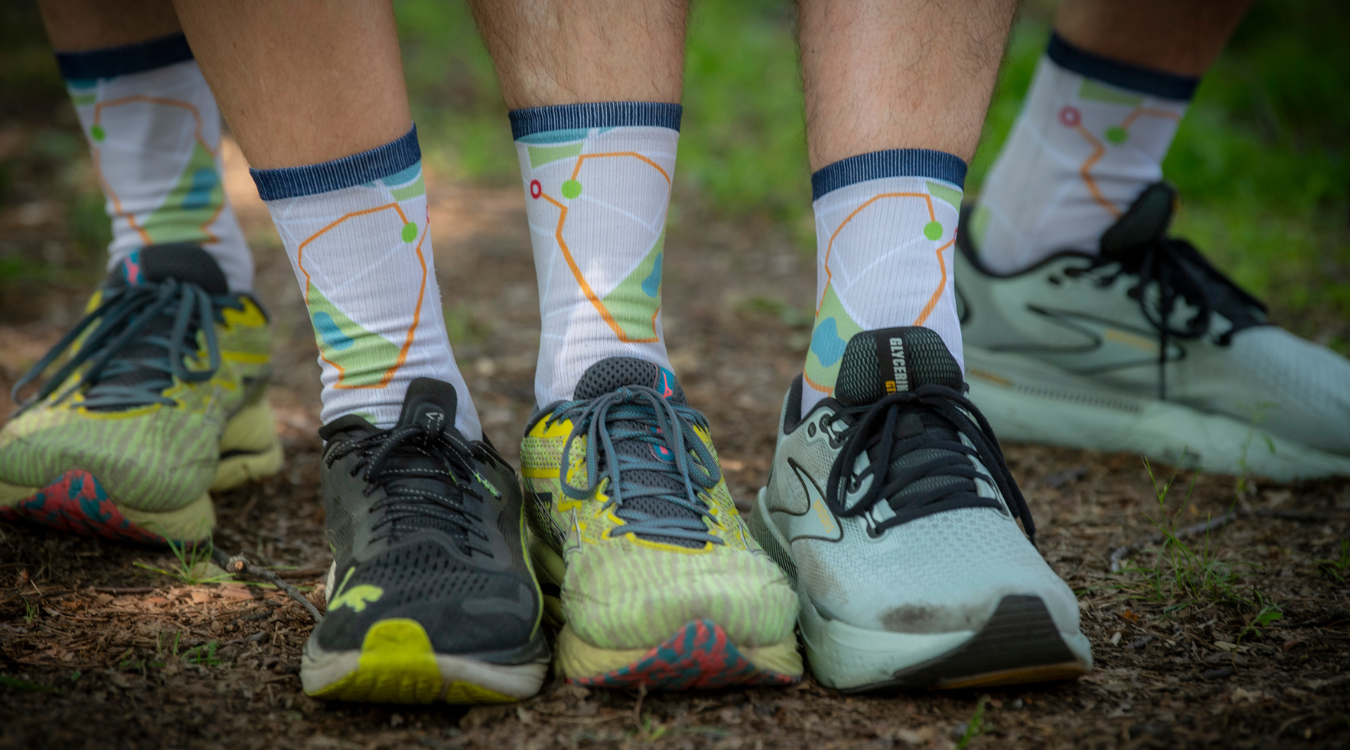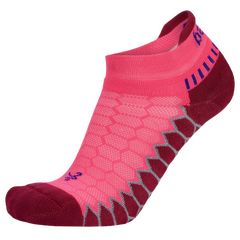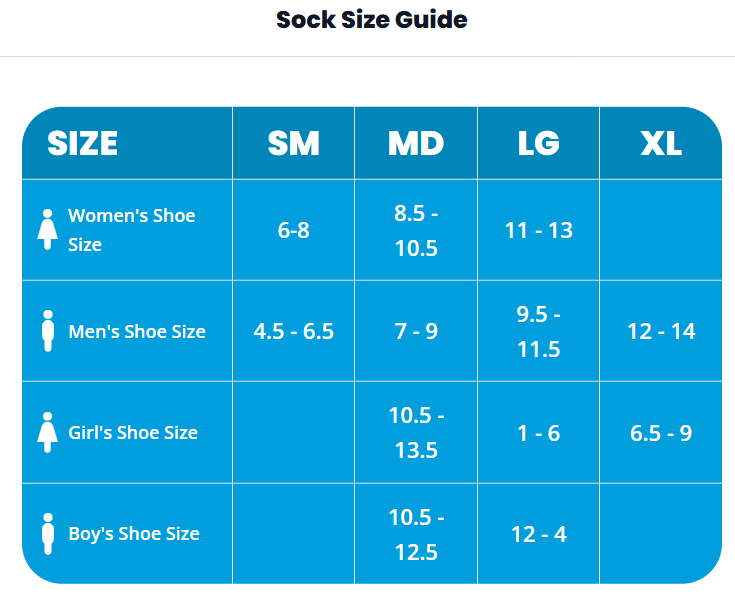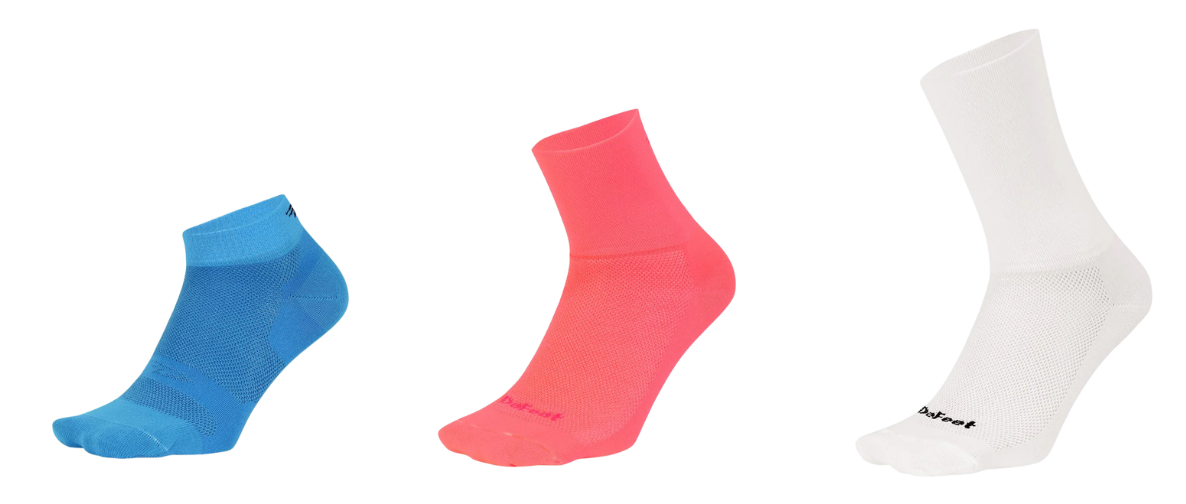4.8 out of 5 Stars
6,200 + Ratings in the Apple App Store
Get our free printable running plan, specifically tailored for beginners
Access exclusive strength & mobility training videos
Overcome common injuries with our expert tips
Join our 12,000+ strong running community
If couch to 5k is too hard - this is the plan for you! This has got me running after injuries and surgeries and starting all over building fitness! Great program and lots of support!

As a new runner, you may wonder why on earth you need to think about what socks you pull on for a run. Chances are, you have a drawer full of socks you wear with sneakers, so why can’t you wear those same socks with your running sneakers?
What you wear on your feet to walk and what you wear to run come with different considerations. Running puts more stress on everything—your bones (a good thing—you’re building bone density), your heart and lungs (again, you’re improving cardiovascular health), muscles, etc.
Running also puts more stress on your feet, and how your feet move within your shoes.

You’re generating more friction inside your shoes with every running step, as opposed to your walking steps. With increased friction comes increased potential for blisters, bunching, and general discomfort. If you’ve ever tried to run or even walk with a blister or hot spot (a pre-blister), you know how uncomfortable that can be.
Your body naturally starts shifting your weight to other parts of your feet; you compensate to keep that painful spot from getting worse. When you compensate, you engage muscles that aren’t natural to your running or walking gait. Compensation—even from a tiny little hot spot on your foot—can cause other pains and even injuries in other parts of your body.
You don’t want that.
So yes, the socks you wear for running do matter. But with dozens, if not hundreds of options available on the market, how do you know what’s right for you? Here are a few factors to consider when shopping for running socks.
The main difference between a regular old sock and a sock made for running is the kind of material it’s made from. Most socks intended for casual wear are made out of cotton. Cotton feels great against the skin, but it doesn’t wick sweat, meaning, it doesn’t pull moisture from your feet and move it to the exterior of the fibers where it evaporates.
That’s important in avoiding blisters and general discomfort. It’s these wicking materials that keep feet dry and comfortable within your shoe. Make sure that any running sock you’re considering is made with sweat-wicking materials.
A sock that’s too big can bunch within your shoe and cause discomfort and/or blisters. A sock that is too small can slip down off your heel and leave the back of your foot bare. You want a sock that fits.
Since you can’t really try on socks in a specialty run store or wherever else you may shop in person, and you certainly can’t try on socks when shopping online, look closely at size charts that correlate with your shoe size before purchasing. (If you’re on the cusp of sock sizes, I say go with the smaller of the two sizes. That works for me.)

Some socks made specifically for running have cushioning built into them in strategic places, like under the heel and the forefoot. Having extra cushioning in your socks—which is basically thicker material in targeted areas—is personal preference and may require some trial and error.
Having cushioning in your sock may also depend on your shoes or your feet; some people have more fat pads in parts of their feet than others.
Some high-end running socks will have features like tightly woven material around the arch intended to provide support, breathability paneling in what are considered high sweat zones like across the top of the foot, deep heel pockets to try to ensure a secure fit, pull tabs at the ankle for easy on-and-off (on no-show socks), etc. Think about which of these features are important to you when you’re shopping.
Or, buy one pair with some or all of these features before buying them in bulk to see if you feel the features are worth the price.

Running socks come in a rage of heights, from “no-show” (which, as you can guess, are the most minimal and extend at or just above the shoe’s collar), to just above the ankle bone (generally called “quarter crew”), to crew socks that hit low- to mid-calf, to full-on knee socks (think compression socks). The height you choose is personal preference.
If you run on a loose surface of any sort—crushed gravel, wood chips, dirt—you might consider longer socks to keep said surface from sneaking into your socks and causing irritation.
The cost of socks made specifically for running (and marketed as such) varies greatly. Generally speaking, the more expensive the socks, the more features—like cushioning, arch support, etc.—they come with.
A lot of socks come in multi-packs with two or more pair per pack, which can be cost saving…but only if you like those socks. Be okay with trying a couple different pair of running socks. If you don’t like them, at least they can join the other socks in your drawer as options to wear with your casual shoes. If you love them, buy in bulk!
Good socks are an investment in happy feet, and happy feet make for happy running.
In order to become a runner, you don't need much in order to become successful: a plan, an encouraging community and consistency. With N2R, you can have them all.
6,200 + Ratings in the Apple App Store

Time is hard to come by. Kids, work, and other commitments can get in the way. You need a plan that's easy to follow and can work around you, not the other way around.

You look "weird" when you run. You’re “not” a runner. You’re too “slow” or too "Old." We're here to tell you right here, right now, that you’re wrong. You only *think* these things because it's new and you feel uncomfortable. That'll change with consistency and time. You are a runner!

It may have been hard previously, but it doesn't have to be – now, you'll be given the tools and the knowledge to succeed. We’re doing things differently in order to see different results.

Running when you aren't ready or without the proper training can hurt, leaving you with nagging injuries that never seem to clear up. We ease you in, giving you the strength and conditioning you need to make sure your running doesn't come with pain.